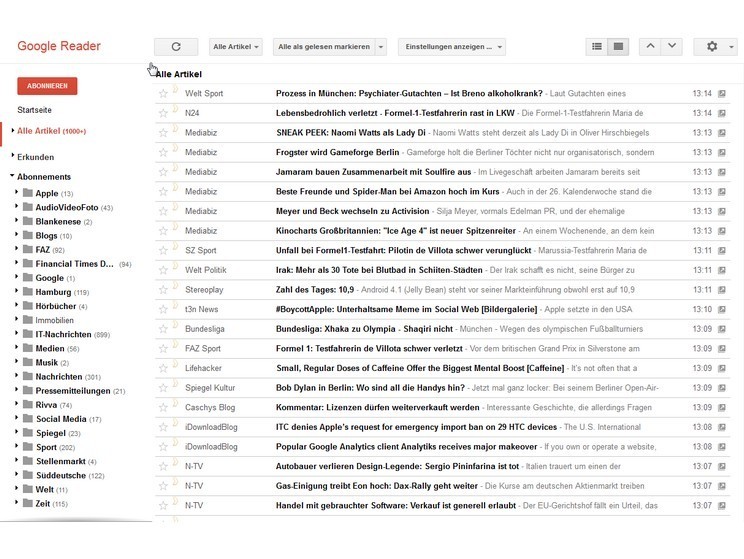

We will use Docker Compose and Dockerfile to build and run our image in a Docker container.
#Rss reader how to#
Learn how to deploy a Deno app using Docker. Learn how to deploy a PHP app using Docker. Learn how to build a Discord bot that registers, handles, and uses slash commands with TypeScript, Discord.js, and Node. How to build a Discord bot using TypeScript.
#Rss reader install#
Learn about each one and install them to supercharge your developer experience.
#Rss reader code#
These are the best Visual Studio Code Extensions for 2022. We will use Docker Compose and Dockerfile to build and run our image in a Docker container.īest Visual Studio Code Extensions for 2022. Learn the cron job syntax and crond daemon. Learn how to set up and schedule cron jobs to automate repetitive tasks in Linux. Learn how to serve a static app including files and content using Nginx running inside a Docker container. How to Serve Static Files with Nginx and Docker. Learn how to use Git, a version control software, including committing, pushing, pulling and working with remote repositories. Git Tutorial: Learn how to use Version Control. Learn how to use Electron, a framework for building cross-platform applications using web technologies like HTML, CSS, and JavaScript. That looks like this: Our RSS parser in NodeĪnd in plain text, it looks like this: Parsing If you run it, you should see the title of the feed, followed by the title and link of each item in the feed. To run the parser, run the following command: node index.js Now that you understand how the parser works, let's run it. Then we are logging the title of each item in the feed along with the link to the item. This is the title of the feed itself, and is the first thing that will be displayed after the RSS feed is parsed. The await keyword is used to wait for the promise to resolve.įinally when the promise is resolved, we're logging the title of the feed. This method takes in a single argument, url, and returns a promise, which we are awaiting. We're using the parseURL method to parse the feed. Inside the parse function, we're using our RSSParser from the rss-parser library to parse the RSS feed. In this case, we are parsing the RSS feed of this very website, but you can parse any RSS feed you want. Next, we're creating a function called parse that will take in a single argument, url, and will parse the RSS feed. Next, we're creating a variable called feedUrl that will hold the URL of our RSS feed. This is the library that we will use to parse our RSS feed. First, we're requiring the rss-parser npm package. Add the following code to the file: import RSSParser from "rss-parser" Ĭonst feed = await new RSSParser().parseURL(url) Ĭonsole.log(`$\n\n`)


Create a file called index.js in the root of our project. With our npm dependencies installed, we can now write our parser. Once you've done that, we are ready to write our parser. Or using npm, you can install it like this: npm install rss-parser Now let's install rss-parser, the library we will use to parse our RSS feed. Feel free to change the name of the project, but we'll keep it as app. This will create a package.json file for you. Run the following command to initialize the project: npm init -y This will create a package.json file in the root of our project. Since this is a Node project, we will need to initialize it as an npm package.


 0 kommentar(er)
0 kommentar(er)
